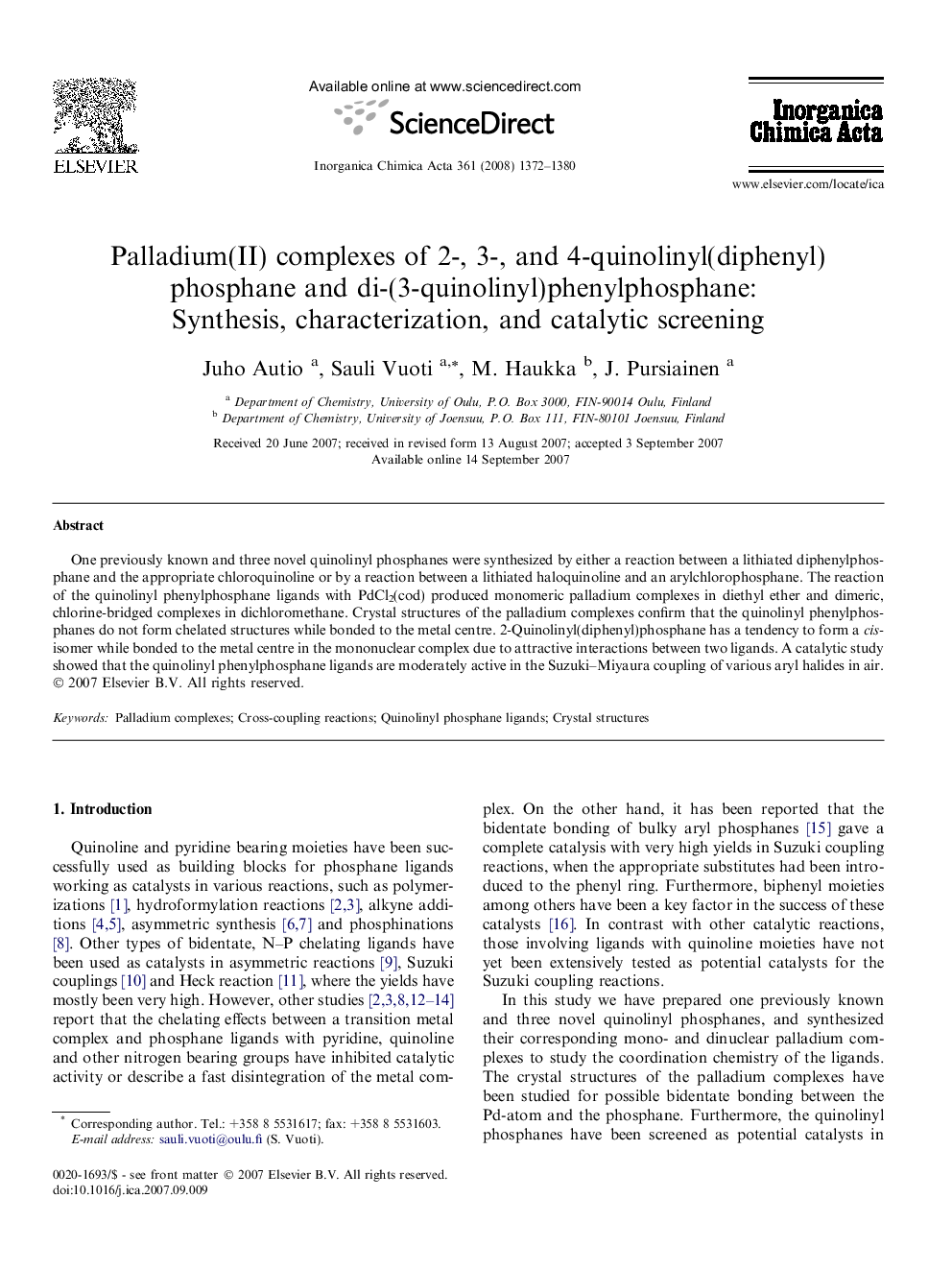| کد مقاله | کد نشریه | سال انتشار | مقاله انگلیسی | نسخه تمام متن |
|---|---|---|---|---|
| 1307366 | 975135 | 2008 | 9 صفحه PDF | دانلود رایگان |

One previously known and three novel quinolinyl phosphanes were synthesized by either a reaction between a lithiated diphenylphosphane and the appropriate chloroquinoline or by a reaction between a lithiated haloquinoline and an arylchlorophosphane. The reaction of the quinolinyl phenylphosphane ligands with PdCl2(cod) produced monomeric palladium complexes in diethyl ether and dimeric, chlorine-bridged complexes in dichloromethane. Crystal structures of the palladium complexes confirm that the quinolinyl phenylphosphanes do not form chelated structures while bonded to the metal centre. 2-Quinolinyl(diphenyl)phosphane has a tendency to form a cis-isomer while bonded to the metal centre in the mononuclear complex due to attractive interactions between two ligands. A catalytic study showed that the quinolinyl phenylphosphane ligands are moderately active in the Suzuki–Miyaura coupling of various aryl halides in air.
A series of quinolinyl phenylphosphane ligands and their mono- and dinuclear palladium complexes have been prepared, characterized and screened as potential catalysts. The picture shows a cis-isomer of the mononuclear palladium complex of 2-quinolinyldiphenylphosphane, revealing an offset π-stacking interaction between the quinolinyl and phenyl moieties.Figure optionsDownload as PowerPoint slide
Journal: Inorganica Chimica Acta - Volume 361, Issue 5, 1 April 2008, Pages 1372–1380